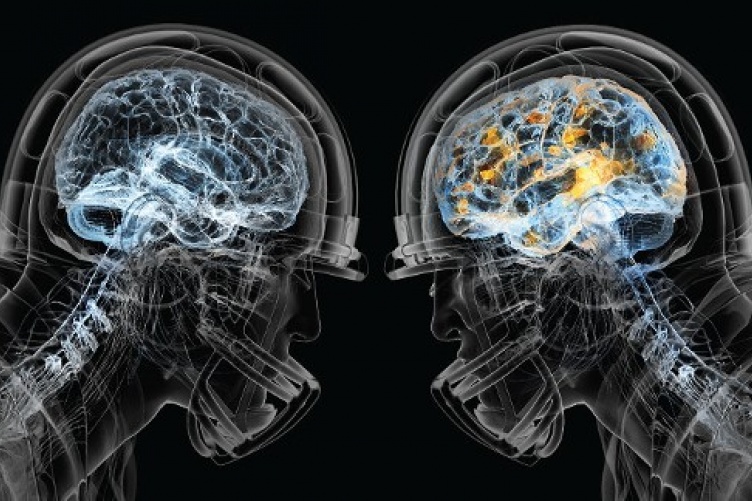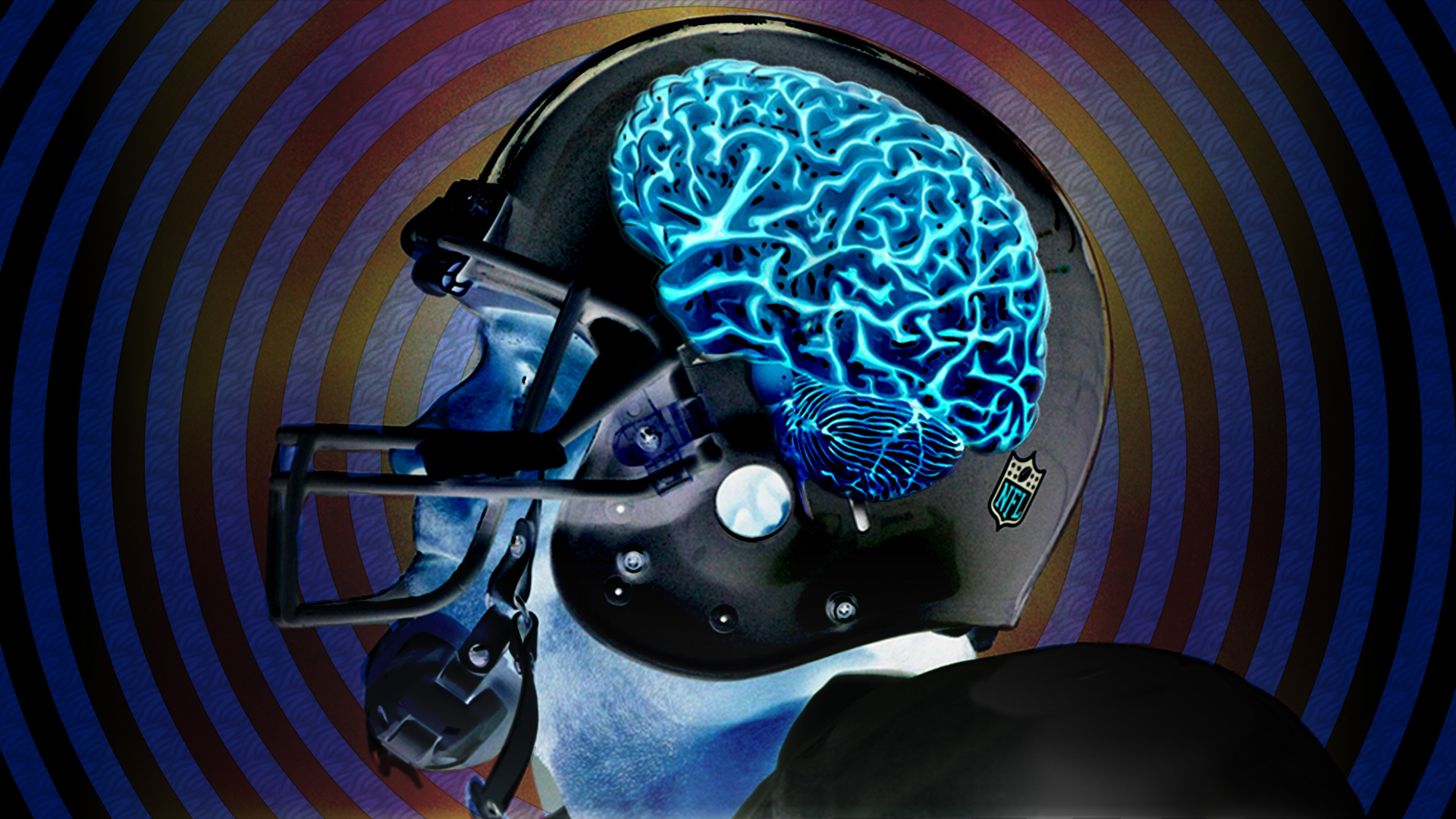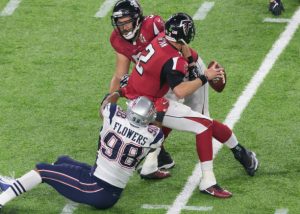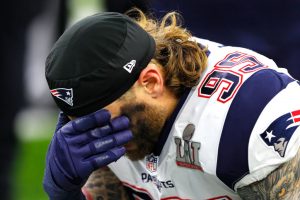
Avielle Hernandez with her mother and other mourners as they depart her father’s funeral.
(Note: Following the release of Jose Baez’s book on Aaron Hernandez’s final days, several erroneous reports have surfaced regarding a lawsuit against the Patriots. That information is incorrect. The initial lawsuit against the Patriots and NFL was withdrawn. This story brings the reader up to speed on the active lawsuit against the NFL and Riddell.)
On October 16, 2017 Shayanna Jenkins Hernandez filed a loss of parental consortium lawsuit in Massachusetts Superior Court against three NFL entities and helmet maker Riddell on behalf of her daughter, Avielle regarding Aaron Hernandez’s diagnosis of CTE. Two potentially important recent court filings the case back into focus.

These photos probably represent the last time young Avielle saw her father. They were taken near the conclusion of a double murder trial in which Aaron Hernandez was found not guilty in the murders of Safiro Furtado and Daniel de Abreu, though he remained in prison for his 2015 conviction in the death of Odin Lloyd. Five days later, in the early morning hours of April 19, 2017, he committed suicide by hanging himself in his prison cell.
Hernandez’s life was a study in contradictions. He was a star tight end for the NFL’s longest running dynasty, New England Patriots, and by all accounts was a loving father. But Hernandez had a long history of emotionally-charged erratic behavior stemming back to his college football days and possibly even high school. Eventually this led to credible charges of homicide. Because of a Massachusetts law based on a legal principle known as “abatement ab initio”. This requires a judge to vacate convictions of a person whose appeal had not been heard at the time of his death his conviction for the death of Odin Lloyd was vacated.

The life and death of Aaron Hernandez prompted much public discussion as to how an intelligent and talented young man who “had it all,” could so callously disregard human life and in doing so, destroy his own future. A likely answer to the question came on September 21, 2017 when the findings of Boston University CTE researcher Ann McKee were announced by Jose Baez, one of the attorneys representing Hernandez. Hernandez suffered from “the most severe case they had ever seen in someone of Aaron’s age,” Baez told the press. There are four levels of classification for CTE, with level four representing the most severe stage. Hernandez pathology was of level four severity. McKee likened the damage to Hernandez’s brain to that of players well into their 60s, but Hernandez was only 27.
Avielle (referred to in some court filings as “AH”) seeks to hold the NFL and helmet maker Riddell responsible for the brain damage that her father sustained, ultimately ended his life and robbed her of a relationship with him. Unlike many other brain injury related claims against the NFL, however, Avielle doesn’t blame the Patriots team or anyone in the league for that matter, for their treatment of her father when he played, because CTE is a progressive disease that takes years to develop. Hernandez was affected with CTE long before he was drafted. Aaron started playing tackle football when he was only five years old (ironically Avielle’s current age). Early symptoms of CTE began to manifest while he was in high school. By the time he entered the NFL he had already received twenty years of football exposure, and this is what she seeks to hold the NFL accountable for. Because of the NFL’s intentional deceptive representations to the public regarding football induced brain injury, that persisted through the entirety of her father’s life, Aaron’s parents unknowingly placed him in danger at a tender age based on the NFL’s misrepresentations, which ultimately cost Aaron his life and robbed a child of her father and his love.
Shortly after the lawsuit was filed in Massachusetts Superior Court, the NFL sought to have the case removed to federal court based on arguments of Labor Management Relations Act (LMRA) § 301 preemption. In response, the Judicial Panel on Multidistrict Litigation moved the case to the Eastern District of Pennsylvania (EDPA) which presides over the NFL’s massive concussion settlement as well as opt-out cases from that settlement.
Once the case landed in EDPA, the NFL sought to have the case dismissed on preemption grounds. The statute in question states:

I wrote about this extensively in another recent article, so I’ll try to provide a brief overview here. This provision was enacted in 1947 to ensure uniform handling of labor disputes. It is often used as a defense to move a case from state to federal court and once there, the court will rule on whether the case should be dismissed on complete preemption grounds.
Two questions are utilized by the courts to make this determination:

If the federal court concludes affirmatively the lawsuit is dismissed, otherwise it is typically remanded back to its originating court. One of the factors used by courts in making this determination includes, “does the case require interpretation of a collective bargaining agreement or merely reference it?” Most courts have ruled that a mere reference does not require dismissal. Courts have also held that lawsuits that plead only state law claims cannot have other claims enjoined by a defendant that the plaintiff did not plead in order to invoke the CBA. Last Wednesday Avielle, through one of her attorneys, Brad Sohn, presented a strong response to the NFL’s preemption arguments.
In it, he pointed out the obvious – that only state law causes of action were pled by the plaintiff. “Defendants’ entire position rests on impermissibly contorting Plaintiff’s allegations and then applying them to a collective bargaining agreement (“CBA”) extrinsic to the removal record in an attempt to force square pegs into the round hole of § 301 preemption. This is precisely the type of jurisdictional manipulation that the Supreme Court has admonished,” he wrote, explaining further:

His argument recaps decades of deception and misrepresentation to the public, which the plaintiff believes led to her father’s brain damage and ultimately his death. This excerpt references the defendants’ financing of sham “science” that was then distributed through legitimate medical journals to confound the public and protect their profits.

Many other examples were included in the response, derived from the eighty-six-page lawsuit, the bulk of which described in detail the defendants’ cover-ups and disinformation campaign.
He also noted that of the four defendants, only one, the NFL Management Counsel is a party to collective bargaining, and certainly the five-year-old plaintiff has never been.
Though court rulings have been uneven as to their interpretation of § 301, and the NFL has had much success with preemption based on this statute, the facts clearly do not favor the NFL in this instance.
Another motion to dismiss filed by the NFL may, however, prove to be more challenging. In this motion the NFL seeks dismissal of the lawsuit on grounds that Aaron Hernandez, and by extension, Avielle is a class member to the settlement and as such has no standing to sue the league. The settlement definition of a class member was included in the filing.

The lawsuit asserts that Hernandez is not a class member due to the fact he never officially retired. When Hernandez was arrested for the murder of Odin Lloyd, the Patriots voided his contract and placed him on waivers. He went unclaimed, and after he cleared waivers, NFL Commissioner Roger Goodell announced that, while charges against Hernandez were pending, the NFL would not approve any contract signed by Hernandez until he held a hearing to determine whether Hernandez should face suspension or other action under the league’s Personal Conduct Policy. This was how Aaron Hernandez’s career ended. Had the ruling in which he was convicted of Odin Lloyd’s murder been overturned on appeal, it is likely that Hernandez would have sought employment with an NFL team.
The NFL points out in their brief, however, that in order to be exempted from the “retired NFL player” status as defined in the settlement agreement, a player must actively be seeking work with a team, which Hernandez was unable to do because of his incarceration.
It appears that Hernandez’s best defense against this could be regarding notice to the class. FRCP Rule 23 which governs class action settlements states:

It seems reasonable that Hernandez could be located, since his incarceration at Souza-Baranowski Correctional Center was widely known. If no individual notice was issued to him or members of his family, due to restrictions in accessing internet and television, it could possibly be argued that Avielle’s claim should be exempted.
If notice was issued and the definition of class member was so vague as not to indicate that he would automatically be included in the class, this could be a potential argument.
Another argument might stem from the fact that Avielle’s claim is not similarly sufficient to other claims made against the NFL because unlike settlement claims arising from the retired players’ NFL careers, her claim is based not on the fact that he played NFL football, but that he played youth football due to the NFL’s deceptive and misleading information that was applied at the youth level, which the NFL also funded.
Advocacy for Fairness in Sports did not receive an immediate response from Attorney Brad Sohn, when comment was requested, although it’s completely reasonable that an attorney would not wish to prematurely reveal his litigation strategy, therefore the above arguments are this writer’s speculation.
If the court rules that Hernandez was a class member, and Avielle by default, and that he did receive proper notice (or fail to find exemption through some other avenue), then she would be “entitled” to file a claim, but according to settlement terms, the claim would be quickly denied because the settlement only compensates Death with CTE if it occurred between January 1, 2006 and July 7, 2014. Thus far in the settlement, no exceptions to this rule have been granted, including the claim filed by the family of Mike Webster, the first NFL player diagnosed with CTE after his death in 2002, and Dr. Bennet Omalu’s eye-opening publication of his findings in 2005.
It’s important to remember as this case unfolds that at the center of it is an innocent child. 
While if Hernandez is guilty of the crimes he is accused of, they can’t be justified by CTE, but they can be better understood in this context.
A Sports Illustrated longform article in which Aaron’s brother Jonathan shares his recollections, he noted that he began noticing behavioral changes in Aaron after the death of their father in 2006. Perhaps he wasn’t able to bounce back since he’d already sustained twelve years of football damage to his brain. One of the primary symptoms of CTE is emotional volatility.
“He had a very big heart. That’s what’s craziest about all this. There is a disconnect. He would open up his arms to anyone,” Jonathan Hernandez recalled through the SI article, “I don’t know. I just know he cared about people.” Now, the person that Aaron Hernandez cared most about, his daughter, will grow up with only phantom memories of her father, along with all the news bits that profiled his fall from grace. The child deserves better.
This article was originally published by Advocacy for Fairness in Sports on July 24, 2018, and republished with permission of the author. The case is still awaiting a response to the NFL motion by the Hernandez legal team.



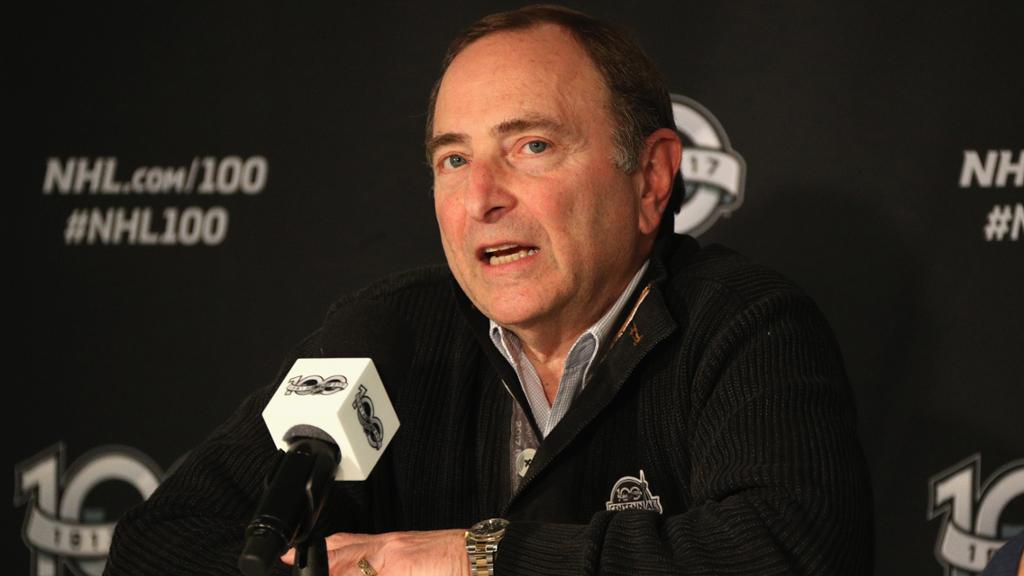
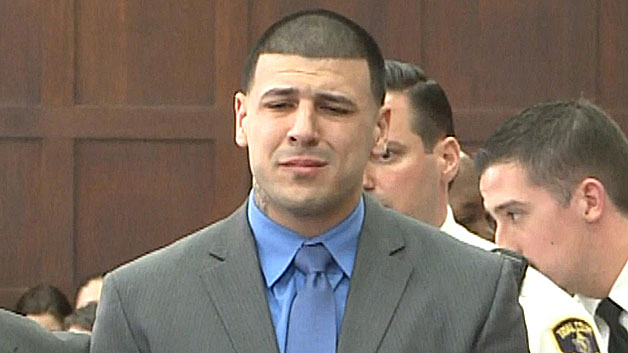










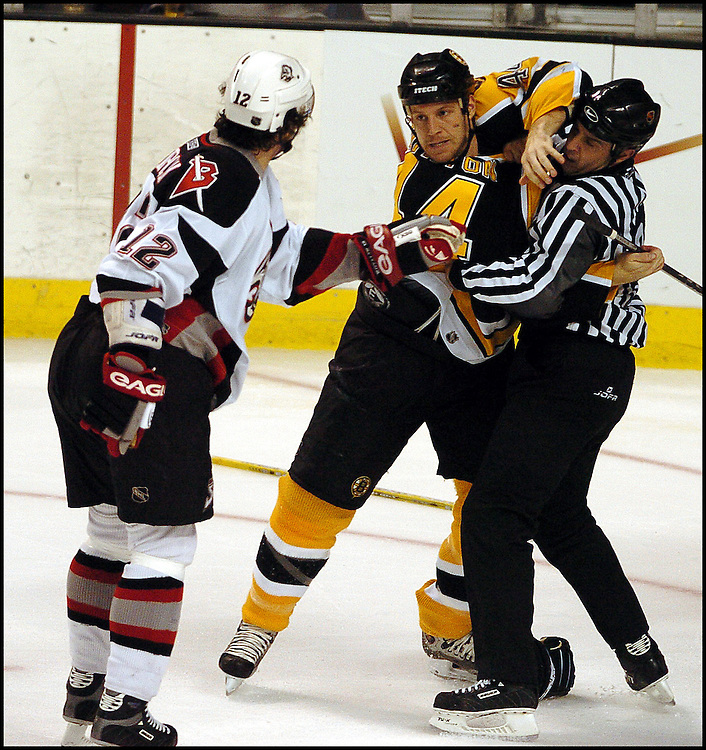
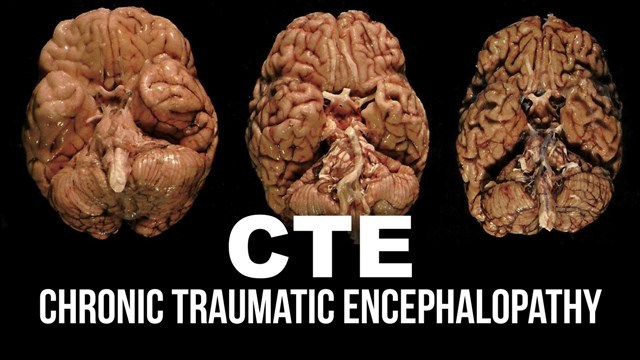


/https://www.thestar.com/content/dam/thestar/sports/hockey/2011/08/16/rypiens_death_shocks_saddens_former_teammates/rickrypien.jpeg)

